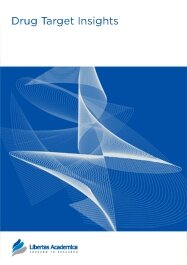

Publication Date: 12 Dec 2006
Journal: Drug Target Insights

Background: For enhancement of drug effectiveness and reduction of drug toxicity, liposomal drugs have been studied in laboratories and clinics for decades. Although the results obtained from in vitro are encouraging, but the results from in vivo tests were not satisfactory. The main reasons for this situation were that we do not have enough information about the way how liposomal particles penetrating into solid tumor tissue, and what happening to the liposome particles after they got into the tumor tissue. In this paper, we are going to report the results from our observations on the way folic acid targeted and non-targeted PEGyl-DSPC liposomal doxorubicin particles penetrate into solid tumor tissue.
Methods: Subcutaneous transplanted murine L1210JF solid tumors in mice were used as a model. PEGyl liposomal doxorubicins were injected through tail venue, and tumor tissue samples were collected at special time points. Cryosections were cut and dried by a fl owing of air after mounted on the slides right away. Then the dried cryosections were stained in water systems; the blood vessel cells were stained with green fluorescent FITC labeled antibody against CD31 antigen; the nuclei of the living cells were stained with a blue fluorescent dye DAPI. Since the whole procedure was carried out in aquatic system, the red color fluorescent liposomal doxorubicin particles remain visible under fl uorescence microscope.
Results: Both folate conjugated and non-conjugated PEGyl-DSPC liposomal doxorubicin particles were only leaking out from the broken holes of blood vessels with a special direction and spread out for a limited distance, which was similar to the results showed before, in that observation a latex microsphere sample was used as a model.
Abbreviations: DSPC:1, 2-Distearoyl-sn-Glycero-3-phosphatylcholine; PEG2000-DSPC:1, 2-Distearoyl-sn-Glycero 3-phosphatidylethanolamine-N-[methoxy(polyethylene glycol)-2000]; Folate-PEG3400-DSPE:1, 2-Distearoyl-sn-Glycero- 3-phosphatidylethanolamine-N-[polyethylene glycol-3400]-folate.
PDF (253.00 KB PDF FORMAT)
RIS citation (ENDNOTE, REFERENCE MANAGER, PROCITE, REFWORKS)
BibTex citation (BIBDESK, LATEX)
XML
PMC HTML
I have had contact with Drug Target Insights several times, and every time I am impressed by the handling of the manuscript. The website is very, very user-friendly. It is easy to submit a manuscript. The entire process is easy and straightforward. The corresponding author is kept updated on the progress at every point. The editors of Libertas were helpful and prompt in responding to questions and issues related to the submission I am pleased ...

All authors are surveyed after their articles are published. Authors are asked to rate their experience in a variety of areas, and their responses help us to monitor our performance. Presented here are their responses in some key areas. No 'poor' or 'very poor' responses were received; these are represented in the 'other' category.See Our Results
Copyright © 2013 Libertas Academica Ltd (except open access articles and accompanying metadata and supplementary files.)
FacebookGoogle+Twitter
PinterestTumblrYouTube